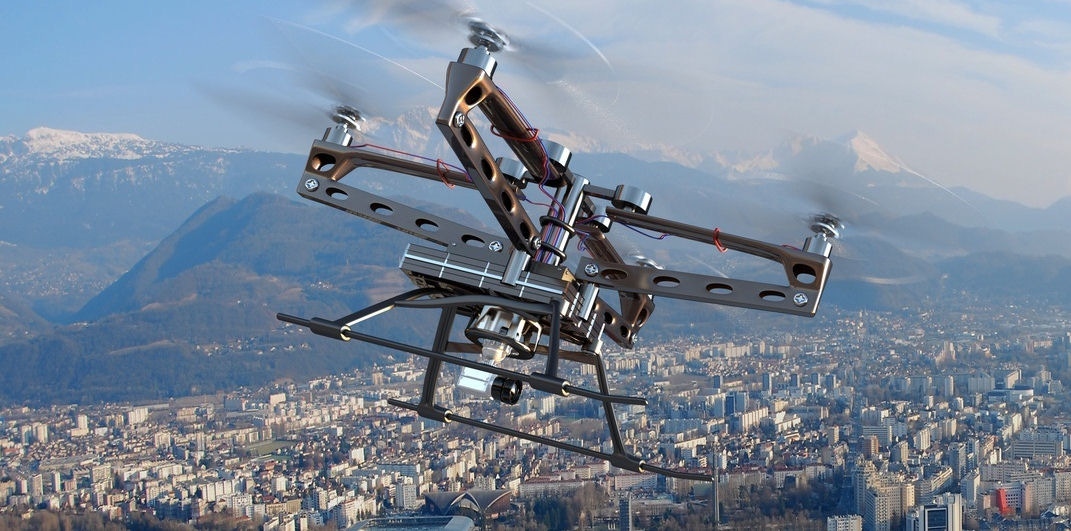Nokia UAE tie up shows drones are no gimmick
Almost every new technology will go through a gimmicky stage and only the strong will crack the mainstream market; it looks like drone tech is on its way to normality.
November 21, 2016

Almost every new technology will go through a gimmicky stage and only the strong will crack the mainstream market; it looks like drone tech is on its way to normality.
With Nokia now collaborating with the UAE to develop an ecosystem to support regular commercial use of an unmanned aerial system (UAS) in the country, it seems the technology is becoming more than a niche. Nokia’s unmanned aerial vehicle (UAV) Traffic Management concept will give the General Civil Aviation Authority (GCAA) the ability to track and manage all UAS in UAE airspace.
The project will begin to pave the way for automated drones for both commercial and government applications, making the UAE one of the first (if not the first) to embrace drones as part of the drive towards smart cities. This is not the first time Nokia has been chummy with the UAE, though it is the first official strategic collaboration.
“The UAE is committed to making Dubai the smartest city in the world, and UAVs are expected to play a critical role in this process by supporting a wide variety of smart city services,” said Bernard Najm, Head of the Middle East Market Unit at Nokia.
“This collaboration with the GCAA, the first of its kind in the world, gives us a unique and extensive test bed where we can trial and refine our UAV Traffic Management system, and shape the future of UAV management overall. This is an exciting opportunity that builds on our strong relationship with the UAE to help facilitate its smart city journey.”
Nokia’s UAV Traffic Management (UTM) concept will sit in the middle of the new ecosystem and will allow (in theory) an administrator to coordinate interactions of drones with people, manned aircraft and an increasingly diverse array of connected objects. The system is designed to provide capabilities such as automated flight permissions, no-fly zone control and beyond-visual-line-of-sight, all important areas in the safe development of drones.
Alongside an effective management platform, there are also a few concerns around whether current infrastructure is advanced enough to allow for the safe operation of drones on a mass scale. 4G LTE and the developing 5G and Mobile Edge Computing technologies will be important, as low latency and exceptional reliability and resiliency will be crucial when monitoring airspace and flight paths, and sharing data between UAVs, operators and air traffic controllers and establishing no-fly zones that can be continually refreshed with the latest data.
Drones are currently being discussed as an important emerging tool for such things as infrastructure monitoring and maintenance, public safety applications, logistics and transport. There is a significant amount of excitement around the technology, though the same could be said about smartwatches which never really left the gimmicky stage, and are now declining as the technology has not moved forward as expected.
Alongside the announcement from Nokia, Dominos New Zealand has been working alongside drone delivery company Flirtey to perfect pizza delivery and Chinese online retailer JD.com is planning to use drones on roughly 100 delivery routes by the end of 2017, momentum in the industry is beginning to gather.
In reality, the use of drones in certain segments is nothing new, oil and gas companies have been using drones to inspect deep sea rigs for years, but the cost savings there are huge. The penetration into the consumer world highlights the technology is getting close to perfection, and the cost is coming down.
This is where the real difference for drones would appear to be. Technologies which have been unable to leave the gimmicky stage have failed for two reasons; technical advancement and price. Take smartwatches for example; standalone connectivity is not always possible, therefore the watch is tethered to a smartphone subsequently removing a number of the benefits, and they are way too expensive.
Drones seem to have found a number of realistic business cases, the technology is moving on very quickly and the price does seem to be hitting the sweet spot for businesses. There is still a huge way to go before regulations are set, safety concerns have been removed and public opinion is satisfied, though it would appear the drone is succeeding where other breakthrough technologies have failed.
About the Author
You May Also Like










.png?width=300&auto=webp&quality=80&disable=upscale)


_1.jpg?width=300&auto=webp&quality=80&disable=upscale)